Axolotls, also known as Ambystoma mexicanum, are unique aquatic creatures that belong to the salamander family. Found in the lakes of Mexico, these fascinating animals are known for their ability to regenerate cells, which means they can regrow lost limbs and organs. Unlike other salamanders, axolotls do not undergo metamorphosis and remain in their larval form throughout their lives.
Axolotls have gills that allow them to breathe underwater and they feed on small fish, worms, and other aquatic animals. These creatures have become increasingly popular in recent years due to their cute appearance and unique characteristics.
What is an axolotl fish? Well, it’s important to note that axolotls are not actually fish but rather amphibians. They are often referred to as “walking fish” due to their ability to walk along the bottom of a body of water using their four legs.
Axolotls are fascinating animals that have captured the hearts of many animal lovers around the world. What makes them so special is not only their ability to regenerate cells but also their cute appearance. Many people find axolotls adorable with their wide eyes and smiley faces.
If you’re wondering how to say “axolotl,” it’s pronounced “ak-suh-lah-tuhl.” It may take some practice getting used to saying it correctly but once you’ve got it down, you’ll be able to impress your friends with your knowledge of these unique creatures.
Sadly, due to habitat loss and pollution, axolotls are considered an endangered species. Conservation efforts are being made in order to protect them from extinction. In fact, there is even a conservation center located in Mexico City dedicated solely to protecting this amazing species.
So what is the rarest type of axolotl? There are several different types of axolotls, including wild type, leucistic, albino, and melanoid. The rarest type is the melanoid axolotl which has a completely black coloration due to a genetic mutation.
Overview
| Characteristic | Axolotl |
|---|---|
| Scientific Name | Ambystoma mexicanum |
| Family | Ambystomatidae |
| Type | Amphibian |
| Order | Caudata |
| Temperament | Peaceful |
| Lifespan | 10 to 15 years |
| Size | 9 to 12 inches (23 to 30 cm) |
| Weight | 2 to 9 ounces (57 to 255 grams) |
| Diet | Carnivore |
| Distribution | Endemic to lakes in Mexico |
| Habitat | Freshwater lakes and ponds |
| Other names | Mexican walking fish |
Characteristics and Appearance of the Axolotl
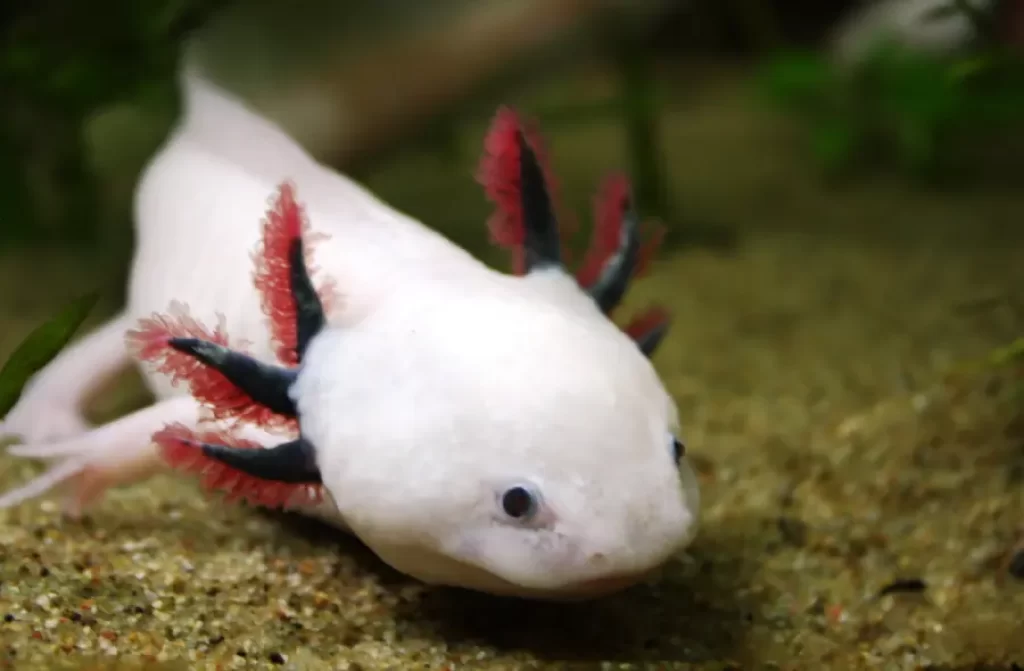
Feathery Gills: The Unique Breathing Apparatus of Axolotls
Axolotls are a type of salamander that have an unusual feature – they retain their external gills throughout their entire lives. These feathery gills protrude from the sides of their heads and are used to breathe underwater. Unlike other amphibians, axolotls do not undergo metamorphosis and remain in their larval form for life. Their unique breathing apparatus allows them to survive in aquatic environments, making them popular pets.
The Regeneration Superpower of Axolotls
One of the most fascinating features of axolotls is their ability to regenerate lost body parts, including limbs and organs. This superpower has made them a popular subject for scientific research. Scientists are studying how axolotls can regrow complex structures like spinal cords, which could potentially lead to new treatments for human injuries and diseases.
Appearance: Smooth Skin and Various Colors
Axolotls have smooth skin that ranges in color from brown to black, with some individuals having spots or speckles on their skin. They can grow up to 12 inches in size and have black eyes that give them a distinctive look.
There are various color variations within the species, including albino, white with black eyes, golden albino with blue eyes, leucistic (white with black eyes but with pigmentation on its head), melanoid (black), copper (brown) and wild-type (mottled dark brown). Axolotl enthusiasts often appreciate the unique appearance of these creatures and enjoy breeding different color variations.
Drawing an Axolotl: Tips and Tricks
If you’re interested in drawing an axolotl, there are a few things to keep in mind. Start by sketching out the basic shape of the body – remember that they have long tails and four legs with webbed feet.
Pay attention to the placement of their eyes and the shape of their head, which is wider than most other salamanders. Don’t forget to include their feathery gills on either side of their head! remember that axolotls come in a variety of shades and patterns. You can get creative with your color choices and experiment with different combinations.
Habitat and Ecology of the Axolotl
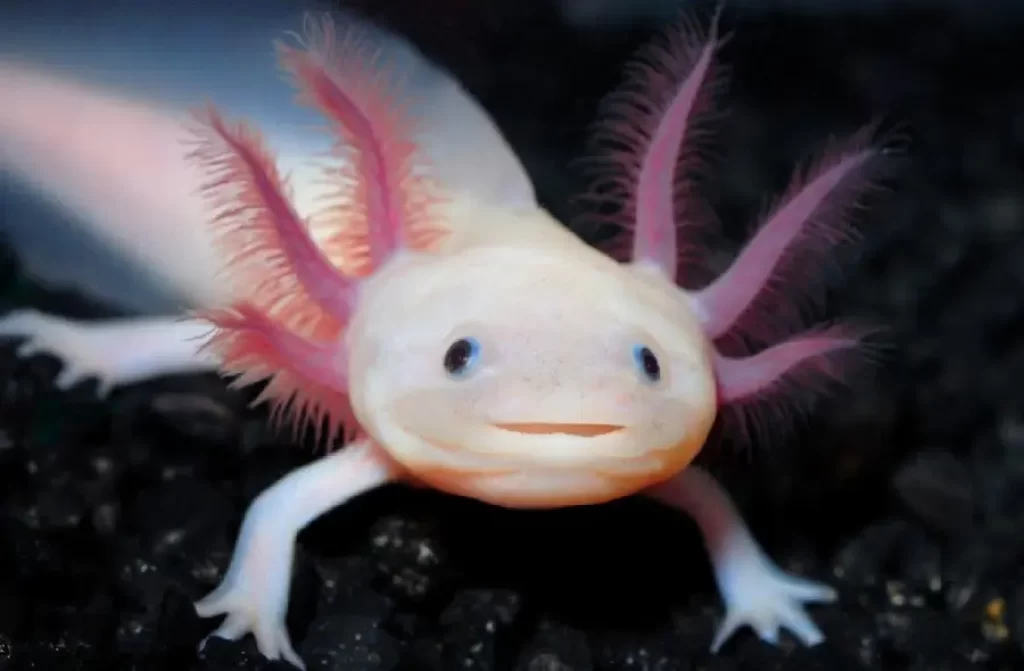
Natural Habitat of the Axolotl
The axolotl, also known as Ambystoma mexicanum, is a fascinating amphibian species that is native to Mexico. The wild axolotl’s natural habitat is in the lake complex of Xochimilco, which is located in the southern part of Mexico City. This lake system consists of interconnected waterways and canals that provide an ideal environment for the axolotl to thrive.
However, this unique habitat is under threat due to various factors such as pollution and urbanization. As a result, conservation efforts have been put in place to protect the natural habitat of the axolotl and its ecosystem in Xochimilco. One such project is the Axolotl Planet, which aims to raise awareness about the importance of protecting this endangered species.
Another area where the axolotl can be found is Lake Chalco, which is located near Xochimilco. Unfortunately, this lake has been drained and converted into agricultural land over time, leading to a significant decline in the axolotl population.
Ecology of the Axolotl
The axolotl belongs to a group of salamanders that are fully aquatic and retain their larval features throughout their lives. This unique characteristic makes them different from other amphibians such as frogs and toads. They have external gills that allow them to breathe underwater and four legs with webbed feet that help them swim.
In terms of diet, axolotls are carnivorous and will eat anything they can catch or scavenge at night when they are most active. Their diet includes small fish, insects, worms, crustaceans, and even other smaller amphibians.
One interesting fact about axolotls is their ability to regenerate body parts such as limbs or spinal cord after injury or amputation. This remarkable feature has made them a popular subject of scientific research, particularly in the field of regenerative medicine.
In addition to the axolotl, another species of salamander called Ambystoma tigrinum also inhabits the same area in Xochimilco. However, unlike the axolotl, this species has adapted to living on land and does not rely on water for survival.
The Axolotl’s Diet and Feeding Habits
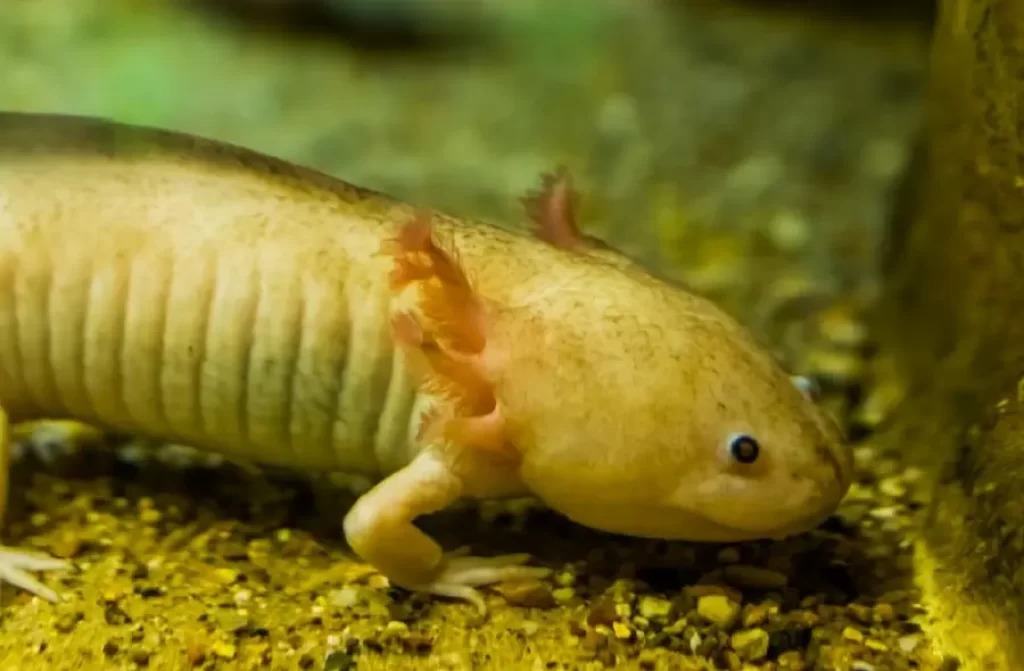
Axolotls are fascinating creatures, and their diet and feeding habits are an essential aspect of their survival. In this section, we will explore the various aspects of what axolotls eat, where they eat, and how to feed them.
What Axolotl Eat
Axolotls are carnivorous animals that primarily consume small prey such as insects, insect larvae, and other aquatic invertebrates.
In the wild, these amphibians hunt for their food by using their keen sense of smell to detect prey and then capturing it with their quick reflexes. They have a voracious appetite and can consume up to half of their body weight in a single day.
In captivity, axolotls can be fed a variety of commercially available foods such as pellets, worms, brine shrimp or krill. Some owners also feed them small pieces of fish or meat. However, it’s important to ensure that these foods are appropriate for their dietary needs. Feeding your axolotl inappropriate food can lead to health problems like obesity or malnutrition.
Where Does Axolotl Eat
Axolotls are aquatic creatures that spend most of their lives in water. Therefore they usually eat underwater. It’s best to feed them in a separate container from where they live so that you don’t contaminate the tank water with excess food residues or uneaten food particles.
When feeding your axolotl in a separate container:
- Fill the container with enough water so that your pet can swim freely.
- Add the appropriate amount of food according to its size.
- Wait until it has finished eating before returning it back into its tank.
What Is Axolotl Food
There is a wide range of commercial foods available for axolotls depending on their age and size. Pellets are an excellent choice because they contain all the necessary nutrients required for growth and maintenance. Live foods like brine shrimp and krill are also a great source of nutrition, but they can be expensive to purchase regularly.
Axolotls can also eat small pieces of fish or meat. However, it’s important not to feed them food that is too large as it can cause choking. It’s also essential to avoid feeding them food that contains preservatives or additives as these substances can harm your pet.
Reproduction and Lifespan of Axolotl
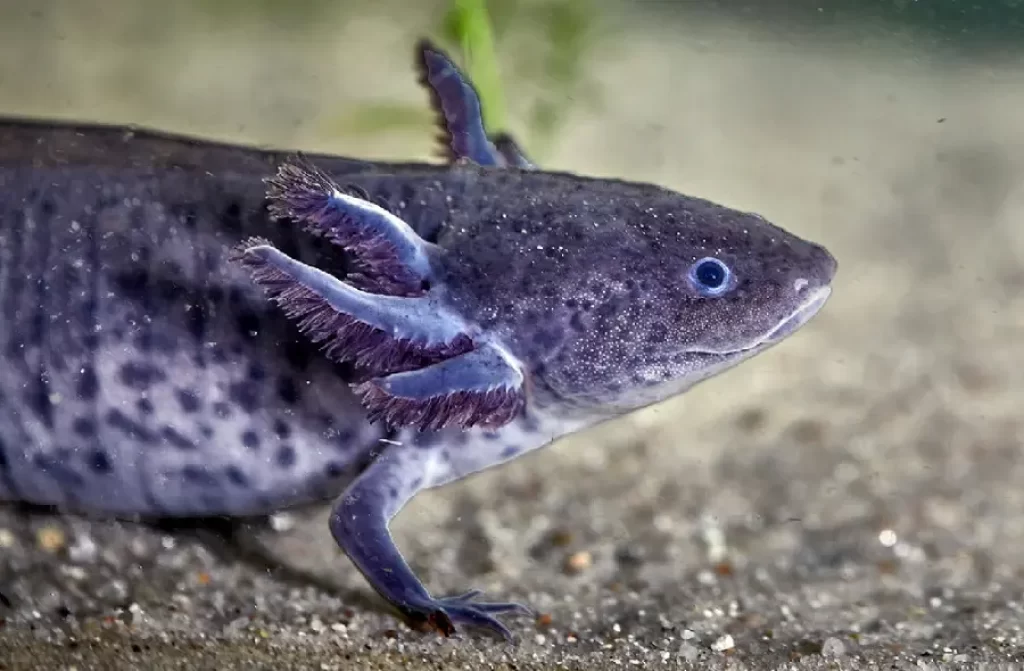
Axolotls are fascinating creatures that have captured the attention of scientists and pet enthusiasts alike. These amphibians have unique reproductive abilities, including the ability to regenerate lost body parts. However, their gene pool is threatened, which negatively impacts their overall lifespan and reproductive success.
Sexual Maturity
Axolotls reach sexual maturity at around 12-18 months old. At this age, they are capable of reproducing both sexually and asexually. Sexual reproduction involves the transfer of sperm from a male axolotl to a female’s eggs. The fertilized eggs develop into larvae, which then metamorphose into juvenile axolotls.
Asexual Reproduction
In captivity, axolotls often reproduce asexually through parthenogenesis or self-fertilization. Parthenogenesis occurs when an egg develops without being fertilized by sperm. Self-fertilization occurs when a female’s eggs are fertilized by her own sperm. While asexual reproduction may be more convenient for breeders, it can lead to genetic problems due to limited genetic diversity.
Regeneration Ability
One of the most remarkable features of axolotls is their ability to regenerate lost body parts. They can regrow limbs, spinal cords, and even parts of their brain! This remarkable ability has made them popular subjects for scientific research on tissue regeneration.
Lifespan and Threats
The average lifespan for an axolotl in captivity is around 10-15 years, while wild axolotls typically live for 7-10 years. However, habitat loss and pollution threaten these creatures’ gene pools in the wild, leading to decreased reproductive success rates and shorter lifespans.
Importance of Axolotl in Biology and Medical Research
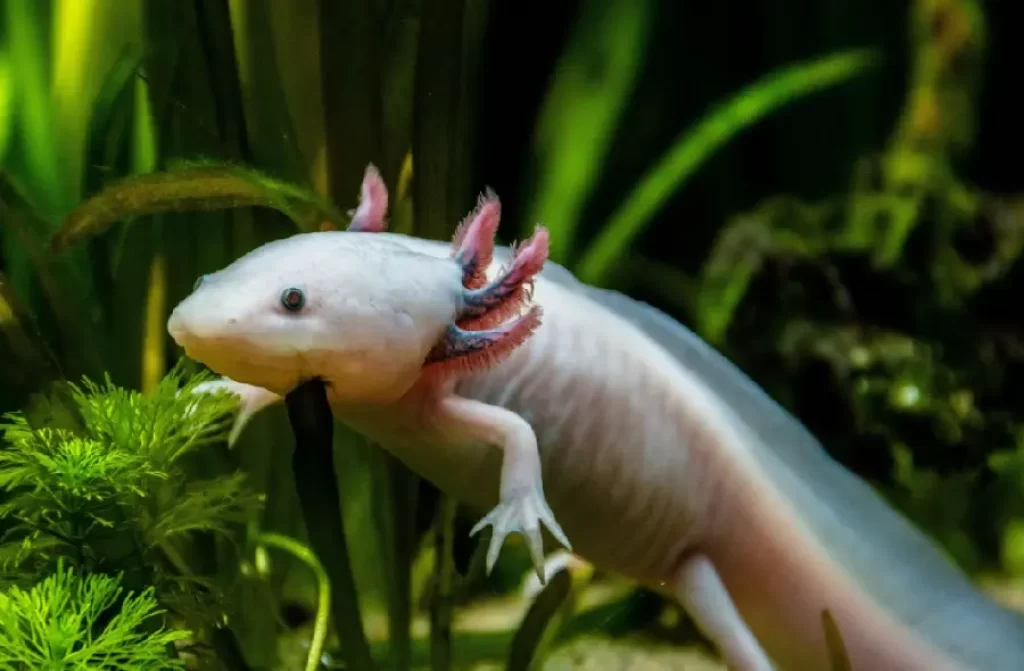
Axolotls: The Key to Unlocking Regeneration and Evolution
Regeneration is a fascinating and complex biological process that has intrigued scientists for centuries. While many animals have some ability to regenerate, few are as impressive as the axolotl. These aquatic salamanders have the unique ability to regenerate not only their limbs but also their spinal cord, heart, and other organs. This remarkable trait has made them an important subject of study in biology and medical research.
Axolotls’ Ability to Regenerate
Axolotls’ regenerative abilities make them a valuable model organism for studying how regeneration works at the cellular and molecular levels. Researchers have discovered that axolotls can regenerate their limbs by activating specific genes and signaling pathways that promote cell proliferation, differentiation, and migration. By identifying these genes and pathways, scientists hope to develop new regenerative therapies for humans.
In one study published in the journal Nature Communications, researchers found that axolotls use a specific protein called Prod1 to initiate limb regeneration.
They discovered that when they injected Prod1 into mice with injured limbs, it significantly improved their healing time compared to control groups. This finding suggests that Prod1 could be used as a potential therapeutic agent for human patients with limb injuries.
Moreover, studies on axolotl spinal cord regeneration have led to exciting discoveries about the role of immune cells in promoting tissue repair.
In another study published in Science Advances, researchers found that immune cells called macrophages play a crucial role in clearing away damaged tissue after spinal cord injury. They also found that macrophages release molecules that stimulate nerve cell growth, which helps restore function after injury.
Neoteny: A Key Trait of Axolotls
Another reason why axolotls are important in biology is due to their unique developmental trait known as neoteny – the retention of juvenile characteristics into adulthood.
Unlike other salamanders that undergo metamorphosis, axolotls remain in their larval form throughout their lives. This means they retain features like gills, which allow them to breathe underwater.
Neoteny makes axolotls an ideal model organism for studying developmental biology. Researchers can study how neoteny affects the development of different organs and tissues in the body. They can also investigate how specific genes and signaling pathways regulate neotenic traits in axolotls.
Evolutionary Insights: Axolotls’ Role in Understanding Diversity of Life
Finally, research on axolotls has contributed significantly to our understanding of evolution and the diversity of life on Earth. Scientists have used genetic sequencing to compare the genomes of different species of salamanders, including axolotls. These studies have revealed insights into how genes evolve over time and how new traits emerge through gene duplication and diversification.
For example, a recent study published in Nature Ecology & Evolution found that axolotls have more copies of certain genes involved in limb regeneration than other salamander species. This suggests that these genes have undergone duplication events specifically in the lineage leading to axolotls, which may explain why they are such proficient regenerators compared to other salamanders.
Threats to the Survival of Axolotl Population
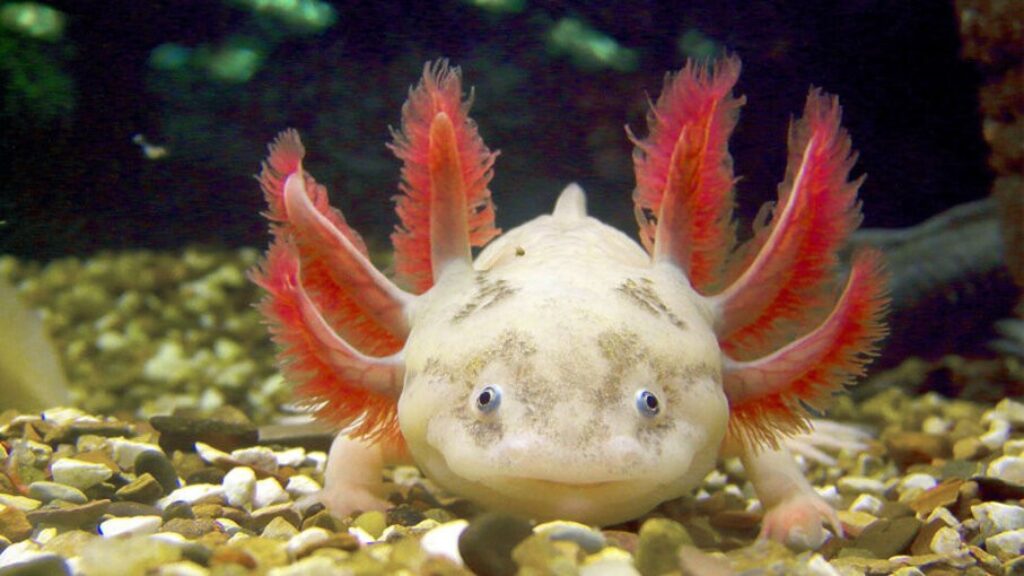
Habitat Loss Due to Urbanization and Pollution
The axolotl population has been threatened by habitat loss due to urbanization and pollution. The rapid growth of cities and towns has led to the destruction of natural habitats, including the rivers, lakes, and wetlands where axolotls live. This has resulted in a reduction in their population as they are unable to find suitable habitats for breeding or feeding.
Pollution is also a major threat to axolotls as it affects water quality. Chemicals from industries, agricultural runoff, sewage discharge, and other sources pollute the water bodies that axolotls depend on. These pollutants can cause physical deformities, developmental abnormalities, and even death in axolotls.
Overfishing and Collection for the Pet Trade Industry
Axolotls are highly prized pets due to their unique appearance and ease of care. However, overfishing and collection for the pet trade industry have significantly impacted their population. Axolotls are harvested from their natural habitats at an unsustainable rate, leading to a decline in their numbers.
The pet trade industry also poses a risk to axolotls as they may be kept under unsuitable conditions that lead to stress or disease. Many pet owners do not have adequate knowledge about how to care for these animals properly.
Introduction of Non-Native Species in Their Natural Habitat
The introduction of non-native species into the natural habitat of axolotls has had a significant impact on their survival. These invasive species compete with native species for resources such as food and space. They may also prey on axolotls directly or indirectly through predation on their food sources.
One example is the introduction of tilapia fish into Lake Xochimilco in Mexico City where axolotls reside. Tilapia fish feed on the same food source as axolotls which leads to malnutrition among them.
Climate Change and Its Impact on Water Quality and Temperature
Climate change has also affected the survival of axolotls. Changes in water temperature, rainfall patterns, and water quality have a significant impact on their natural habitats. For example, changes in water temperature can affect the breeding behavior of axolotls or lead to disease outbreaks.
Disease Outbreaks Affecting the Wild Population
Axolotls are susceptible to various diseases that can cause mass mortality events. One example is chytridiomycosis, a fungal disease that affects amphibians globally. The disease causes skin lesions, lethargy, and death in infected animals.
Conservation Efforts to Protect Axolotl
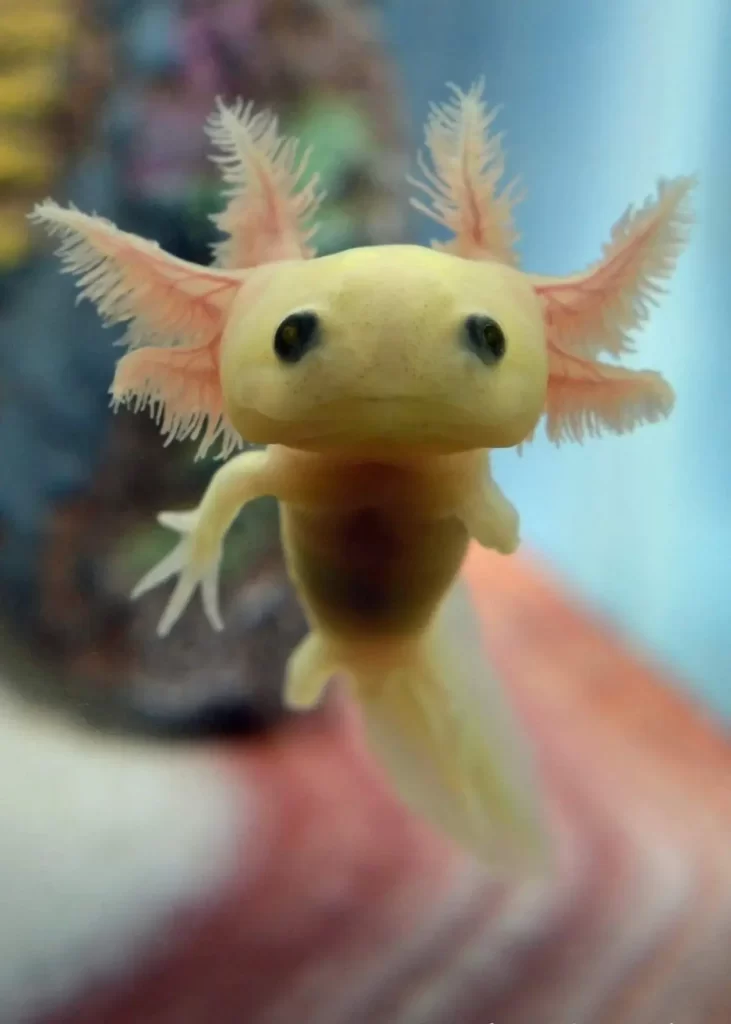
Extensive Research and Study
The conservation efforts for axolotls are driven by extensive research and study. Scientists have been studying the axolotl’s habitat, behavior, and biology to better understand how to protect them. The axolotl is a unique creature that has regenerative abilities, making it an important subject of scientific research. However, this also makes the species vulnerable as they are often captured for laboratory use.
Main Threats to Axolotl Populations
Research has shown that pollution, habitat destruction, and invasive species are the main threats to axolotl populations. Mexico City’s urbanization is one of the biggest threats to their natural habitat as it leads to water contamination from sewage and other pollutants. Invasive species such as tilapia fish compete with axolotls for food resources.
Protected Areas and Breeding Programs
Conservationists have established protected areas and breeding programs to help preserve the axolotl population. The Xochimilco Ecological Reserve in Mexico City was created specifically for protecting the species’ natural habitats. This reserve provides a safe space for axolotls while also promoting eco-tourism in the area.
Breeding programs have also been established in both Mexico and abroad to increase the captive population of axolotls. These programs aim to reintroduce captive-bred individuals into their natural habitats while also providing a sustainable source for scientific research purposes.
International Recognition
International organizations have recognized the importance of protecting axolotls and have listed them as endangered species. The International Union for Conservation of Nature (IUCN) Red List currently lists them as critically endangered due to their rapidly declining population numbers.
Continued Efforts Needed
While conservation efforts have made progress in protecting axolotls, continued research and conservation efforts are crucial to ensure their survival in their natural habitat. The axolotl’s regenerative abilities make them a valuable subject of scientific research, but this should not come at the cost of their survival in the wild.
Building Shelters for Axolotl
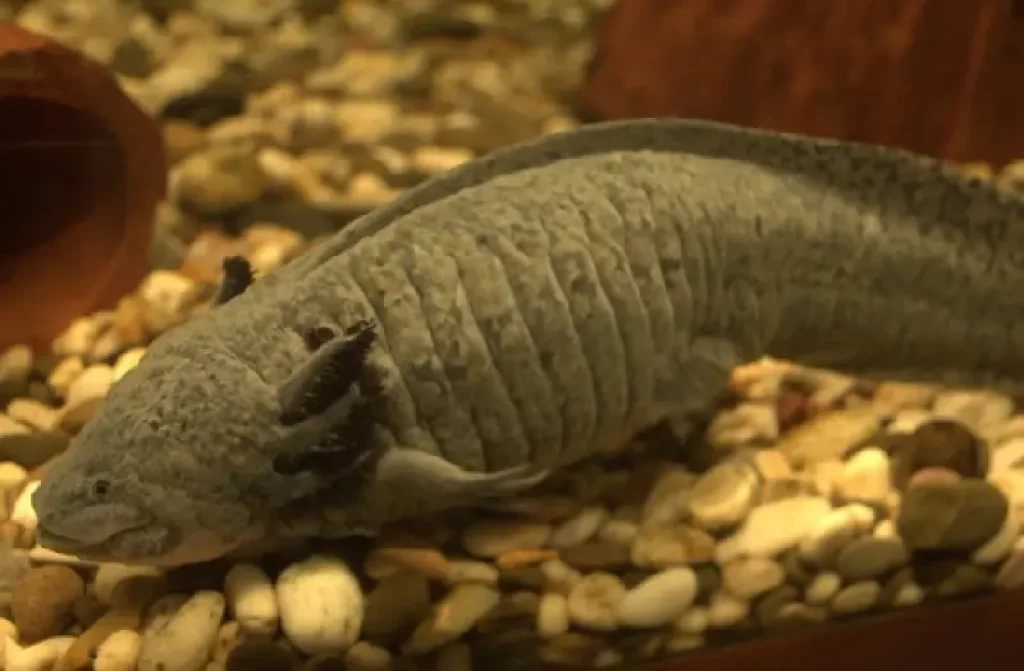
Axolotls are fascinating creatures that require a safe and secure environment to thrive. While they can be kept in a lab or aquarium, providing them with a shelter is essential to their well-being. In this section, we’ll discuss the importance of building shelters for axolotls and how it can be done using various materials.
Materials for Building Shelters
There are several materials that can be used to build shelters for axolotls. PVC pipes, rocks, and clay pots are some of the most popular options. PVC pipes are easy to clean and provide an excellent hiding place for axolotls. Rocks also make great shelters as they mimic natural environments where these creatures would typically live in the wild. Clay pots are another option as they provide a dark and secure space for axolotls to hide.
Carp Shelters in Mexico City
In Mexico City, carp have been used to create shelters for axolotls in their natural habitat. Carp dig into the mud at the bottom of lakes and create tunnels that serve as hiding places for axolotls. These tunnels help protect them from predators while also providing them with a comfortable environment.
Importance of Safe Shelter
Axolotls have delicate skin that can easily be damaged by rough surfaces or sharp edges on their shelter. It’s crucial to choose materials carefully when building shelters so as not to harm these sensitive creatures’ skin or injure them in any way. Axolotls have regenerative abilities, but it’s still important to ensure that any injuries do not occur needlessly.
Stem Cells from Axolotl
Stem cells from axolotls have been studied in laboratories worldwide due to their potential use in tissue regeneration and repair. They possess unique properties that allow them to regenerate tissues lost through injury or disease better than other animals such as humans.
Frequently Asked Questions
Can axolotls be held? Yes, they can be held gently with wet hands.
How much is an axolotl tank? The price of an axolotl tank varies depending on the size and quality of the tank. A basic 10-gallon aquarium can cost around $50, while a more advanced setup can cost several hundred dollars.
Where to buy an axolotl pet? Axolotls are available from pet stores or online retailers such as Axolotl City or Aquatic Arts.
How to crochet an axolotl? There are many tutorials available online that provide step-by-step instructions for crocheting an axolotl. Materials required include yarn, a hook, stuffing material, and safety eyes.
What is the command to spawn a blue axolotl? This question refers to Minecraft game commands and is unrelated to real-life axolotls.
Saving the Axolotl from Extinction
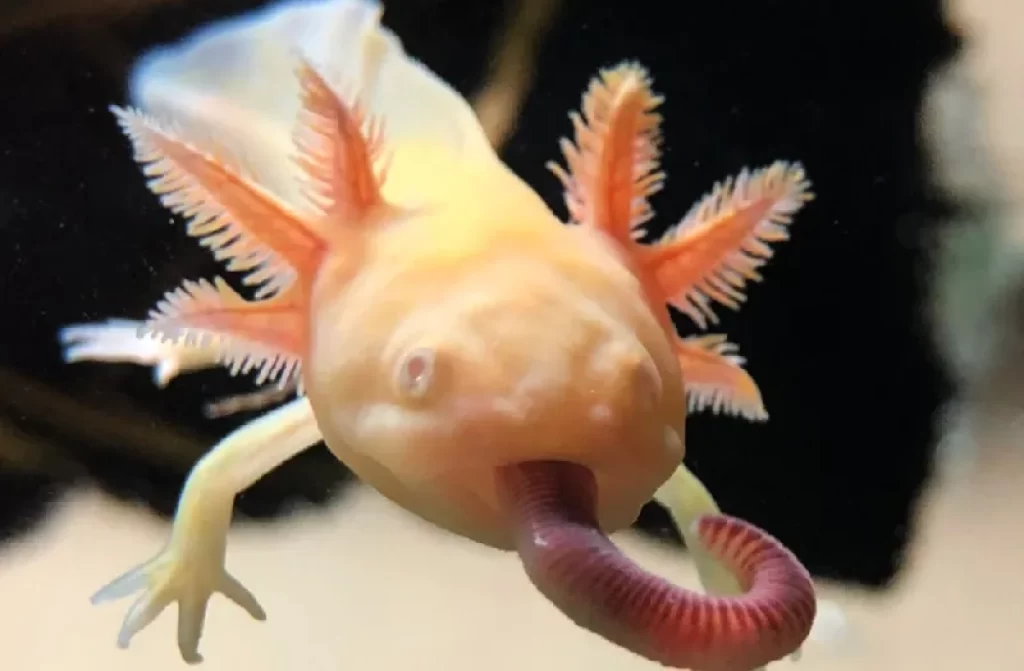
The axolotl is a unique and fascinating creature that has captured the attention of scientists, researchers, and animal lovers alike. With its distinctive appearance and remarkable regenerative abilities, this amphibian has become an important subject of study in the fields of biology and medical research.
However, despite its popularity among enthusiasts, the axolotl population is facing a significant threat of extinction. Habitat loss, pollution, and overexploitation have all contributed to the decline in their numbers.
It is imperative that we take action to protect these creatures before it’s too late. Efforts must be made to preserve their natural habitats and prevent further destruction. Conservation programs should be established to promote breeding and reintroduction into the wild.
As individuals, we can also do our part by supporting organizations dedicated to protecting endangered species like the axolotl. By spreading awareness about their plight and advocating for their preservation, we can make a difference in ensuring that future generations will continue to marvel at these incredible creatures.
Tags: AmphibiansAxolotl



